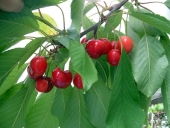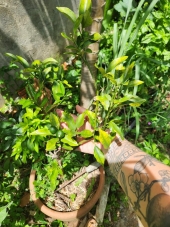They are evergreen, slow growing and easy to propagate by cuttings. In a pot it will stay relatively small but if it gets too big you can always prune it, hang the branches to dry and pluck the leaves and save for cooking. I've heard they are only hardy to zone 9 but I have never gotten more than some light damage down in the mid teens so I don't bother protecting it anymore. I bought mine at a local nursery 10-12 years ago, just a little 6-8 inch stick with a few leaves. It's about 3 or 4 feet tall now and not very bushy, but I use bay leaves a lot in the kitchen. It is in a pot and doesn't seem to be bothered when I forget to water it for long stretches in the summer. I'm considering planting it in the ground since winters aren't as cold around here as they used to be. I'm pretty sure where you are a bay tree would need little to no protection once established. Also, I've never had issues with anything eating, or even nibbling, it. If you like to cook with bay leaves, it is worth searching out, fresh leaves are far superior to dried.







